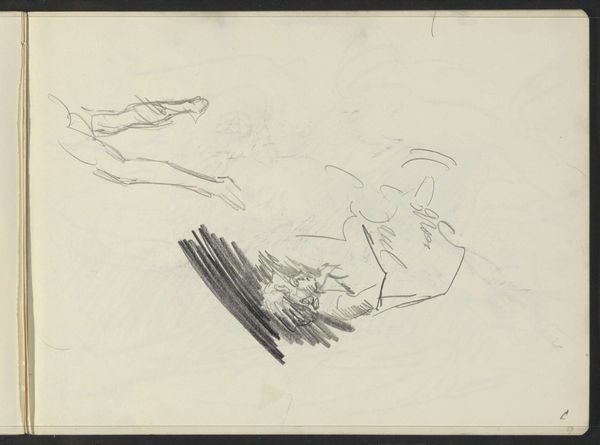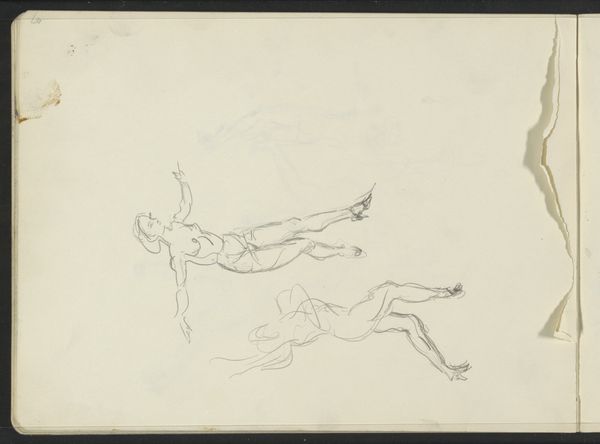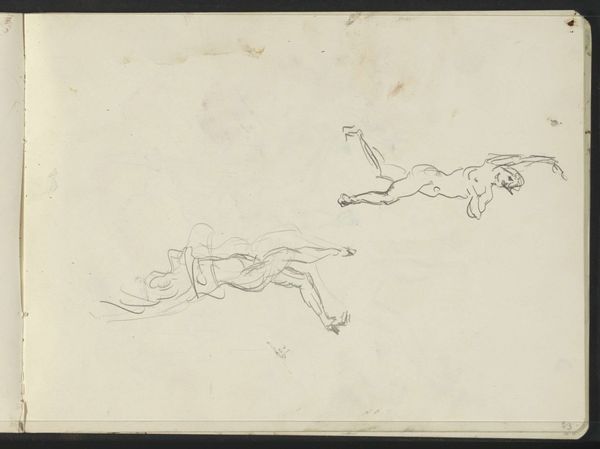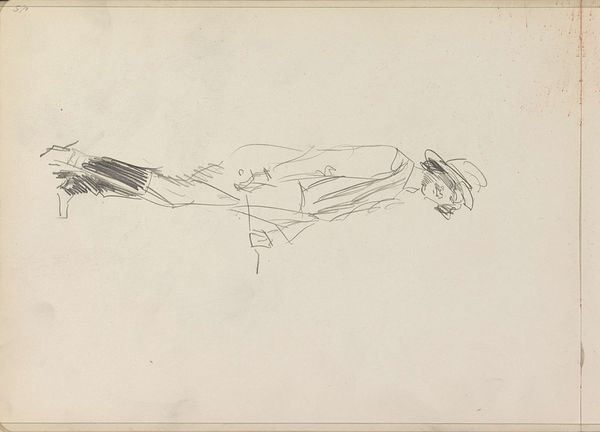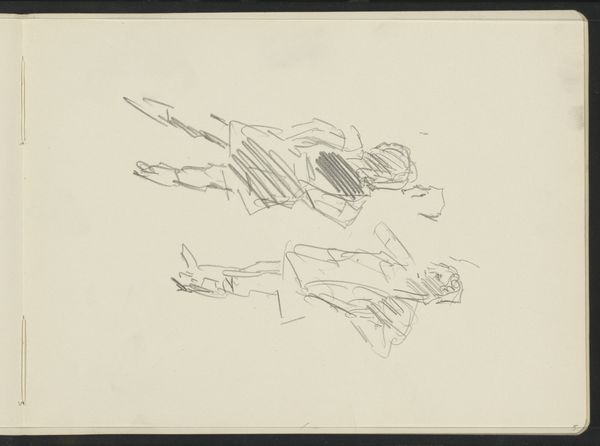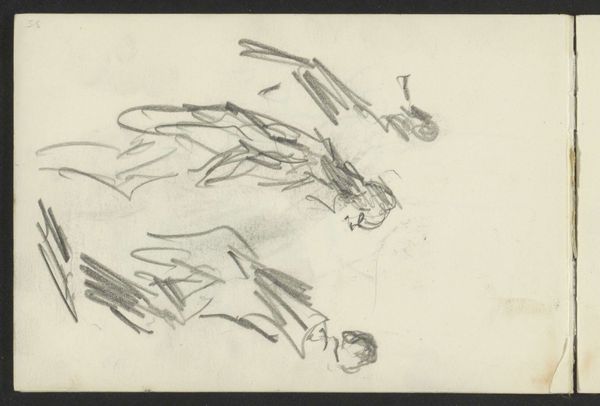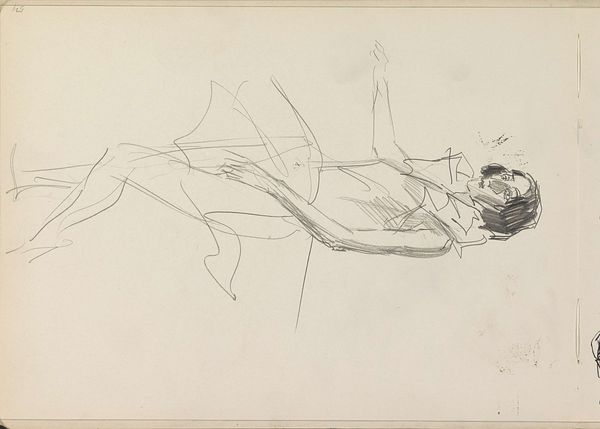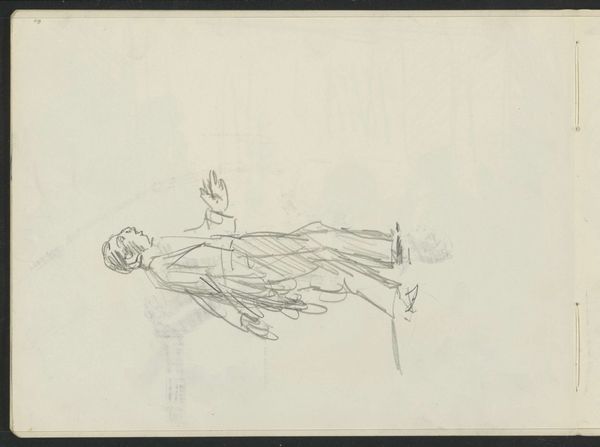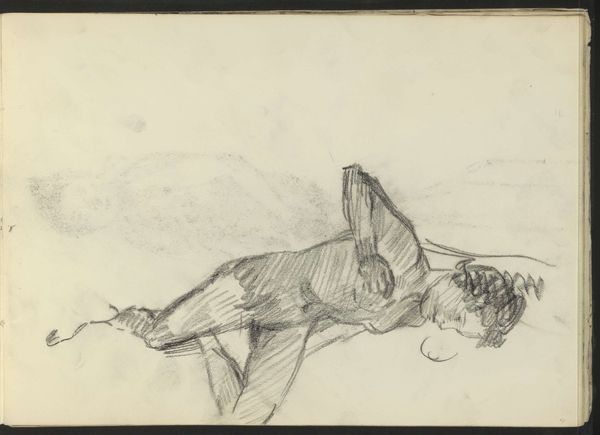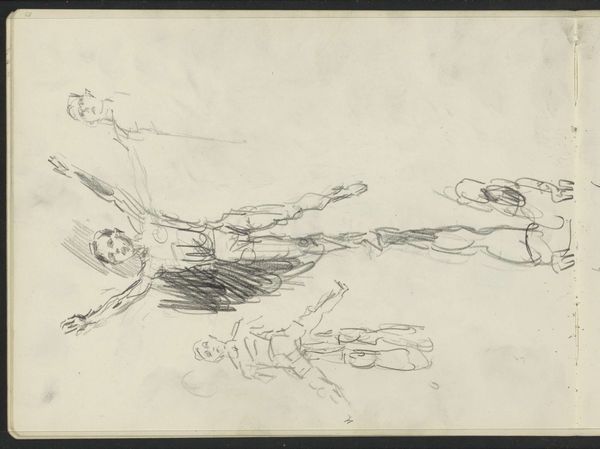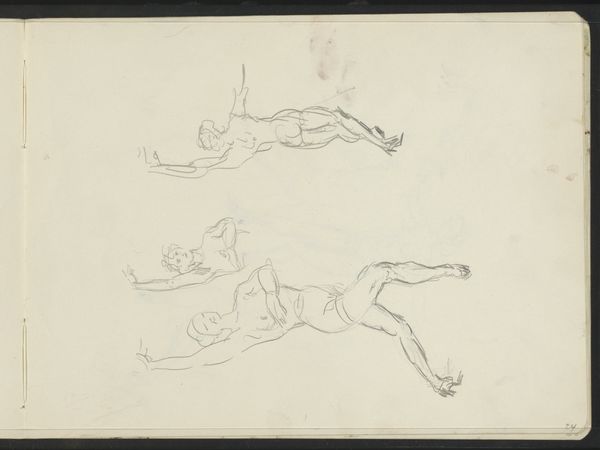
drawing, paper, pencil
#
drawing
#
light pencil work
#
quirky sketch
#
impressionism
#
figuration
#
paper
#
personal sketchbook
#
idea generation sketch
#
sketchwork
#
ink drawing experimentation
#
pen-ink sketch
#
pencil
#
sketchbook drawing
#
academic-art
#
nude
#
sketchbook art
#
initial sketch
Copyright: Rijks Museum: Open Domain
Curator: This drawing, entitled "Figuurstudie," by George Hendrik Breitner, was created between 1884 and 1886. It's currently housed here at the Rijksmuseum. My initial reaction is it looks… tentative. Like a ghost of a figure, barely there. Editor: Indeed. Observe the delicate pencil work, the clear intention of academic study shining through. The artist seems primarily concerned with capturing form and gesture. The sketch itself reads almost like a diagram. Curator: But what sort of form? I find it incomplete, unfinished in a way that reflects its societal setting. Breitner was working during a period of rapid social change. Nudes such as this served academic training, not public art. Do we have the details of what class this work was part of? Editor: We don’t have those particular details, however this drawing’s value, formally speaking, isn't about some implied public purpose, but its internal elements, its arrangement of lines to delineate shape. This embodies a structured approach. Note the variations in line weight, hinting at shadow and depth, however minimal. The semiotic of the sketched subject here shows the raw artistic process. Curator: But doesn’t the medium itself become part of that symbolism? Its impermanence. Pencil on paper – this is meant for an eventual painting, for "real" art. I mean, in the public consciousness, nude sketches are just not given the attention they deserve. Editor: While the choice of medium surely reflects its status as a study, I posit that that initial artistic act still offers insights. The quickness of the line suggests a mind rapidly absorbing visual data and converting it to essential marks on a surface. I would describe it as the fundamental distillation of an artistic insight into only what is fundamentally needed. Curator: Ultimately, that distinction probably depends on our position in society at any given moment in time. For an everyday museum visitor, though, hopefully this brings forth an experience reflecting not the final painting, but just how far such a work of art might have had to come. Editor: A valid point. For me, seeing how an artist works towards his eventual creation provides valuable access into an individual thought process, an important function served when understanding form itself.
Comments
No comments
Be the first to comment and join the conversation on the ultimate creative platform.
